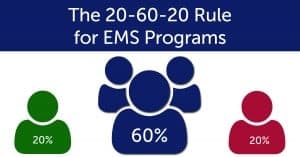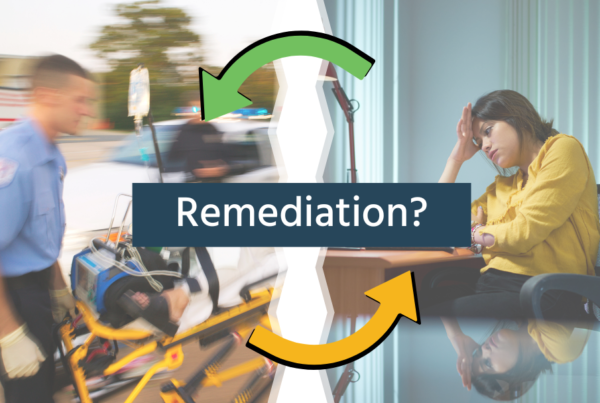By Dan Limmer
There are a lot of statistical rules like the Pareto principle (the 80/20 rule). I’ve been teaching and observing EMS classes for more than 35 years, and I’ve decided there’s a 20–60–20 rule for the average EMS licensure program. Here’s the rule:
 20% of the people in any given class will pass even if the educator were to never show up.
20% of the people in any given class will pass even if the educator were to never show up.- 60% of the people will likely pass with effort on the part of both the student and the educator.
- 20% of the people will fail. They either won’t pass the course or the NREMT, or they just don’t take the NREMT.
Since every class is a little different, my reflection on these three groups isn’t so much intended to offer statistical analysis as it is to look at how we teach to the students in each of these groups in class.
The 20% who would pass even without the educator are a challenge on the high end of the spectrum. They would read their book and watch YouTube videos and do just fine. These are the pre-med students who are looking for patient care experience or students who are so intrinsically motivated that failing isn’t an option.
How do these students thrive? By being given a challenge.
The 60% who must work a bit to pass are the “everyday” students. Their grades go up and down with life events and the amount of work they put into any particular exam. These aren’t the problem students nor the ones who raise their hands all the time. I do believe that these students are among the most likely to go out and get their EMT cards and become EMS providers.
Engagement is the key to success for this large group of students.
The 20% who will fail often do so by their own hand. In this category there seem to be as many reasons as there are students, but among the most common ones are poor attendance, lack of study, poor reading ability, a life full of drama, attention deficit issues, and more. I never like to write these students off, because we may be surprised at how they come through in the end. These students are often likable—and may even become good EMTs if they pass the course.
This challenging group may respond to structure, a boot in the ass, a heartfelt talk—or nothing.
One of the common threads among all three groups is that the new dynamic classroom is a benefit to each of these types of students. We can challenge the high achievers, engage the large group in the middle, and perhaps provide some incentive for the poor readers and short attention span crowd in the last group. We should now be striving to create a more dynamic classroom for all our students.
Have you found that your classes fall into similar groups? What have you done to engage and ensure the success of all your students? We’d love to hear your feedback!


